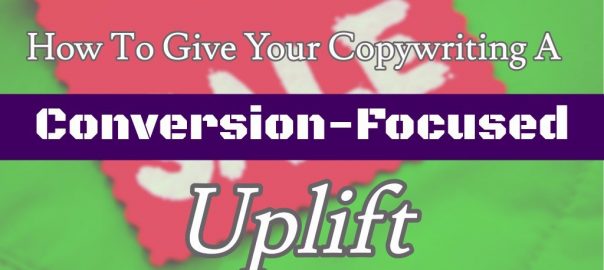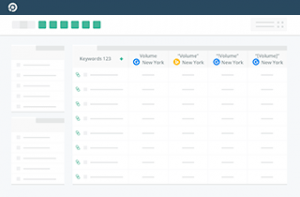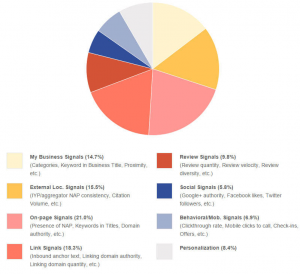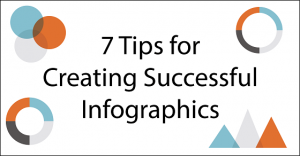
“Your readers should feel so compelled to read your copy that they cannot stop reading until they read all of it as if sliding down a slippery slide” – Joseph Sugarman
Wikipedia defines copywriting as “the act of writing text for the purpose of advertising or other forms of marketing. The product, called copy, is written content that aims to increase brand awareness and ultimately persuade a person or group to take a particular action.”
In a nutshell, I believe that copywriting is the science (and art) of writing compelling content that tailors your product/service to the needs of your prospective customers in order to maximize conversions.
On a scale from 1 to 10, how would you rate your copywriting quality? Does your current copy(s) have the “slippery slide” effect that legendary copywriter Joseph Sugarman recommends?
No matter where you may fall in the ever-evolving copywriting spectrum, this comprehensive guide will give your copy a conversion-focused uplift.
Know Thy Product
Having a crystal clear product description is essential for your overall marketing strategy, including copywriting. Answering the following questions will enable you to capture every aspect of your product. As a result, you will be more equipped to sell it.
- Know your “Why”: Why are you offering this product or service?
- Describe your product in a short paragraph. (The same way you would describe it at a business networking event.)
- What’s the primary benefit of your product?
- Identify your unique selling proposition (USP), your unique value proposition (UVP) or any U that makes your product unique.
- What are the main features (technical aspects) of your product?
- What are the benefits (tangible outcomes that your customers need) of each feature?
Compile your answers into one “product specifications” document that you would use a reference for writing your copy.

As you see, Trello’s copywriters obviously know their product. Follow their tracks for optimal results.
Know Thy Customer
You’re selling your product to a customer. It goes without saying that you need to gain in-depth knowledge of your target customers in order to convince them to make a sale.
I’m not planning to dwell on the importance of knowing WHO your customer is by creating detailed buyer persona profiles. This topic has been heavily covered. I’m not underestimating the importance of marketing personas. Still, I prefer to tackle a rather untapped issue.
What most businesses fail to do is leveraging existing customers. Come up with creative ways to actually “talk” with your customers. By getting them to open up and share HOW they feel about your product, you would gain invaluable insights that would help you refine your copy as well as your entire marketing strategy.
Some of the proven tactics for proactively knowing how your customers perceive your products include:
- Conducting surveys
- Offering concierge onboarding services (if applicable)
- Conducting regular online Q&A sessions with clients
You may raise the following open-ended questions. (The following questions are intended for businesses that sell products. If you’re offering services, rephrase the questions accordingly.)
- How did our product help you reach your goal (solve your problem)?
- How would you describe our product to a friend or colleague?
- What questions did you have about our product before buying?
- What are the most important features that made you decide to purchase our product?
- What additional features (enhancements) would you like to see in future versions?
You may be rightfully wondering: Why would customers care to take the time to answer your lengthy, open-ended questions?
Good question. The answer is profoundly simple: Pay it forward by offering superior post-sales customer experience. Spare no effort to make your customers feel valued and appreciated. By successfully retaining your customers, they would reciprocate by offering in-depth answers to your questions.
In the meantime, you need to keep an eye on how your customers are describing your product on social media. What about customers’ testimonials?
Compile all of these “What customers think of my product” treasures into one document. As you review the document, make sure to highlight and focus on two key aspects:
- Commonly raised remarks or issues
- The EXACT words that customers are using to describe your product.
This document will be the foundation for your future copies, alongside the product description document mentioned above.

The above picture is a well-written copy that follows the “Know Thy Customer” track in a very heartwarming and emotional level.
Now you’re all set. Roll up your sleeves and let’s get writing.
Craft Your Copy
Are you are writing a copy for a sales page, a blog post, an email…? The following best practices apply to all types of copy.
Stir Emotions With A Customer-Centric Copy
In addition to the two documents that you have already created, I highly recommend answering these customer-product blending questions created by branding expert Hey Shenee .
- What is the problem you are solving?
- What type of person has this problem?
- What does their day-to-day life look like with this problem?
- What is the ONE thing your ideal customer wants?
- How does their life look like after using your products/services?
Prior to writing copies for my clients, I always send them these 5 profoundly simple questions. I invite you to take the time to answer them and incorporate them into your copy. You will be glad you did.

General Assembly beautifully sparks their past subscribers emotions in order to get them to change their minds. Would you re-subscribe after such a heartfelt message? I know I would!
Think Benefits First…Features Next
As mentioned in the “Know Thy Product” section, product features represent the technical aspects of your product and how it works. Benefits, on the other hand, are the tangible value of your product.
Detailing product features is important at specific times such as post-sales training or showcasing detailed product comparison with your competition. However, they may be confusing during the pre-sale phase.
If you are writing a copy to give customers good reasons to buy your product, benefits should take the driver’s seat.

As you see, Crazy Egg focused on highlighting their product benefits in the headline. Then, they wrote the tools names (features) in a smaller font underneath.
Conduct A “We” Versus “You” Copy Audit! Be Conversational…
Many businesses wish to believe that their copies speak for their customers. In some cases, however, business ego would kick in and ruin their copy, turning it into a super-boring, “look at me. I rock” message!
Fortunately, businesses that fall into this conversion-sucking trap can easily fix it. All you need is to scan your copy and compare the occurrences of “We” versus the occurrences of “You.”
A Customer-focused copy would include substantially more “You’s” than “We’s”. If the copy is company-focused, you would notice the opposite scenario.
If you discovered that your copy is company-focused, keep polishing it until it becomes customer-focused. In addition, make sure to use a friendly and conversational tone throughout your copy. You may use question-based headlines to stir curiosity or end your copy with an interesting question.
Short Copy or Comprehensive Copy? The Eternal Debate…
Copy length has been an ongoing debate. Copywriters who advocate comprehensive copies, as well as those who prefer short and sweet ones, both offer valid reasons to support their arguments.
That’s why; I can safely say that there’s no rigid rule of thumb here. Your product-customer mix dictates every aspect of your copy, including its size.
Having said that, there are two commonsense rules to keep in mind:
- If you’re selling a rather expensive product, you may go for a lengthy copy in order to persuade your target customers to make a purchase. In addition, if you’re offering a complicated and rather technical product, a comprehensive copy would be a must as well.
- On the other hand, if you are asking readers to sign-up in return for discount coupons, you don’t need to go out of your way detailing why they would enjoy the free deal. Similarly, if you are selling a cheap product, a brief copy would suffice as shown in the example below.

Generally speaking, write as much as you need to make your point and stop right there. To make sure that your copy measures up to your reader’s expectations, put yourself in their shoes. As you review your copy, ask intensive customer-focused questions: “How can I make this paragraph more interesting? Is there anything missing? Is this paragraph necessary or redundant? Is this sentence clear or confusing? …etc.”
If you follow these guidelines, you may end up with a very short or a super-lengthy copy. As long as your readers are happy and your copy is converting, you have reached the perfect size.
Pave The Way For A Call-to-action That Sells
Highly successful copywriters recommend that you write your first draft quickly without overthinking. Then, take your time tweaking and polishing it afterward. Fast and spontaneous writing stimulates the creative right-hand-side of the brain. As a result, you would come up with a naturally flowing copy that sparks emotion. Let your intuition guide your first draft, leaving room for logic later on.
Another important copywriting rule is: On sentence leads to the other, starting with the headline. Focus on writing a compelling headline that propels readers to read the sentence that follows. The first sentence should be so good that the readers feel compelled to read the second sentence and so forth. (This rule is one way of applying Joseph Sugarman’s “Slippery Slide” copywriting style.)
You may further boost the quality of your copy by keeping the following best practices in mind:
- Give specific examples and case studies that prove the value of your product.
- Showcase your industry leadership and business track record WITHOUT becoming “company-centered”.
- Magnify credibility and invite trust by strategically placing relevant customers’ testimonials within your copy.
- Create a sense of urgency by offering limited-time offers.
- Sweeten the deal by offering free trials, money-back guarantees, free shipping and so forth.
- Make your copy visually appealing by following up-to-date design best practices
Finally, your copy should lead to your desired call-to-action (CTA). Your CTA is the grand finale of your copy where you direct eager readers to take a specific action such as making a purchase, signing up for a free trial, registering for your webinar, downloading your e-book…and so forth.
![]()
Do you feel COMPELLED to click on the above call-to-action? Mission accomplished!
Nail Your Headlines… Nail Your Headlines… Nail Your Headlines
Interestingly, headlines are the last part that you write after finishing your copy. Still, they are the first part that your readers see and they prejudge the entire copy accordingly. That’s why; it’s important that you take the time testing and tweaking headlines until you find your winner.
A good headline should encompass all of the above: Unique, compelling and specific. On top of that, a converting headline should trigger emotions and spark readers’ curiosity. Above all, a headline is a promise of what your copy would deliver. You may promise and over-deliver to delight your readers but the opposite is not ok. If you under-deliver and your copy didn’t live up to what the headline promised, kiss your credibility goodbye!
Finally, Never To Rest Until You’ve Put Your Copy To The Test…
“No pain no gain.” Testing every element of your copy starting from the headline all the way to the CTA is a daunting task. Still, it’s the only way to refine your copy for optimal conversions.
Depending on the nature of your copy, you may need A/B testing, email marketing testing (such as click-through rate and open rate) and so forth.
In order to appreciate the importance of testing and tweaking your copy, I invite you to try this awesome conversions prediction copywriting quiz. I was so hopeful when I took this quiz. Surprisingly, I ended up guessing 5 out of 10 correctly and was rated as a “Proficient Copywriter.”
I was certain that I would score more but, no matter how “proficient” my copywriting skills may be, predicting which headline resulted in higher conversions is by no means a guessing game. If you are after a copy that sells, exhaustive testing is out of the question. What do you think?
What’s your take on the above copywriting best practices?
I look forward to reading your insights in the comments. Your valuable contribution is much appreciated. To our success!
* Adapted lead image: Public Domain, pixabay.com via getstencil.com
The post How To Give Your Copywriting A Conversion-Focused Uplift [Examples] appeared first on Search Engine People Blog.
Search Engine People Blog(105)







